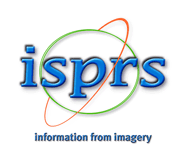Human Action Recognition from Motion Capture Data based on Curve Matching
Keywords: Action Recognition, Human Actions, Motion Capture Data, Frechet distance, Dynamic Time Warping, Berkeley Multimodal Human Action Database
Abstract. Human action recognition can be used in a wide variety of scenarios in many areas of human activity, such as medicine, public safety, gaming and entertainment, etc. In this paper, we focus on the problem of human action recognition based on data obtained using motion capture systems. To solve this problem, we use an approach based on the transition of original motion capture data to sequences of points in a lower-dimensional subspace and subsequent classification of human actions by matching the trajectories of points in the specified subspace. In particular, to match the trajectories, we explore the Frechet distance and the Dynamic Time Warping distance in both dependent and independent forms. To form a lower-dimensional subspace, we consider two well-proven approaches: the Principal Component Analysis technique and supervised feature selection procedure. We compare obtained results with alternative techniques using open Berkeley Human Action Database.





